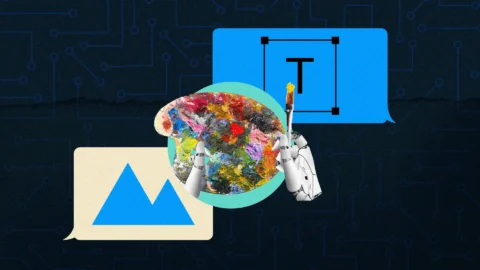It is advantageous and essential to deliver high-quality software quickly in today’s fast-paced digital world. Companies are constantly under pressure to maintain great user experiences while innovating, releasing new features, and fixing bugs more rapidly than ever before. Despite their continued importance, traditional software testing techniques frequently fall behind these quick development cycles. Manual testing takes a lot of time and is prone to mistakes, and when applications change frequently, even conventional automation may fail. AI testing tools are changing the game in this area.
AI agents are now being used to automate and optimize complex test scenarios that would be too time-consuming or even impossible to handle manually, thanks to machine learning and intelligent algorithms. By learning from the behavior of the application, adapting to changes, anticipating possible risks, and continuously improving testing procedures over time, these AI-driven solutions do more than simply run prewritten scripts. Businesses can achieve faster time-to-market, improve defect detection rates, increase test coverage, and drastically cut down on testing time by implementing AI in software testing.
More significantly, AI agents enable QA teams to concentrate on more strategic projects like innovation, customer experience enhancement, and exploratory testing rather than tedious manual tasks. The role of contemporary AI testing tools, how AI agents are revolutionizing test automation, and doable actions you can take to incorporate intelligent automation into your testing approach will all be covered in this blog.
Why AI Agents for Test Automation?
Quality assurance is undergoing a revolution thanks to AI agents. AI-powered agents learn, adapt, and optimize test cases based on system activity, in contrast to conventional automated scripts that only follow pre-written instructions. Based on modifications to the codebase or user behavior, they are able to identify irregularities, forecast hazards, and even recommend new test cases. Because of their degree of flexibility, AI agents are particularly helpful in dynamic, large-scale systems where it would be impractical to manually update test cases.
Key Advantages of Deploying AI Agents
The following are some major benefits of using AI agents:
Accelerated the creation and execution of tests: Test scripts can be automatically generated and run by AI testing tools by examining user journeys, application behavior, or even natural language requirements. As a result, tedious manual scripting is no longer required. In a fraction of the time required for a human tester, AI agents can scan applications, comprehend their functionality, and develop thorough tests. Because of this, teams can iterate more quickly and begin testing much earlier in the development lifecycle.
Automation for Self-Healing: Maintaining scripts when applications change—whether as a result of backend modifications, updated workflows, or UI changes—is one of the main challenges with traditional test automation. This problem is resolved by AI agents that automatically update test scripts using smart locators, machine learning, and pattern recognition. In addition to significantly lowering maintenance costs, this self-healing feature guarantees increased script resilience over time.
More intelligent risk-based testing: Testing tools with AI capabilities dont simply automate everything. Rather they rank the test cases according to user impact code changes historical flaws and business risk. AI agents assist testers in prioritizing high-risk areas guaranteeing that crucial features and pathways are consistently validated in-depth. This methodical approach guarantees quicker identification of show-stopper bugs and increases test efficacy.
Constant learning and adjustment: Artificial intelligence agents get better with time. A continuous learning loop is fueled by each interaction test run and defect found. AI agents can forecast possible failures suggest new test cases and dynamically optimize test strategies by honing their understanding of the system being tested through the analysis of enormous volumes of historical and real-time data.
How AI Testing Tools Enable Intelligent Automation
Scripted instructions that follow a linear, predictable course are frequently a major component of traditional test automation. This method works well for systems that are stable and never change, but it is insufficient in the agile, quickly changing software environments of today. By enabling intelligent automation—automation that is flexible, aware of context, and able to make judgments based on real-time data—modern AI testing tools overcome these limitations.
A closer look at how AI testing tools propel this new era of intelligent automation is provided below:
Intelligent Test Authoring
Traditional test script development is a bottleneck particularly for teams lacking dedicated automation engineers since it frequently necessitates extensive programming knowledge and an in-depth comprehension of the applications architecture. By facilitating intelligent test authoring, AI testing tools eliminate these obstacles. AI tools can automatically create test scripts based on user actions such as clicking buttons, completing forms, and navigating pages in place of manual scripting.
These scripts are very accurate and can be modified to fit various application states. Furthermore plain English requirement documents or user stories can be interpreted by AI agents using natural language processing (NLP) and transformed into executable test scenarios. A requirement that states for instance the user should be able to log in with a valid email and password can be automatically translated into a comprehensive end-to-end test case.
Test Maintenance
One of the most difficult tasks in automation has historically been test maintenance. Static scripts frequently malfunction in dynamic applications where workflows, page structures, and user interface elements change frequently, resulting in significant downtime and high maintenance costs. With the introduction of self-healing automation, AI agents transform this area. They can identify modifications to the application, including altered element IDs, updated classes, or even minor design changes, and update the impacted scripts automatically without the need for human intervention.
Smart Bug Detection
Defects are usually discovered only after the entire test suite has been run in traditional automation. Before failing to report issues, the automation frequently keeps running if a critical problem arises early in the workflow, wasting time and money. By utilizing real-time monitoring, predictive analytics, and anomaly detection techniques throughout the testing process, AI testing tools bring intelligent bug detection.
Additionally, AI agents can anticipate the most likely application failure points and concentrate extra testing efforts there by continuously learning from historical defect data. Faster feedback cycles less defect leakage into production and an overall improvement in software quality are the results of this proactive bug detection strategy.
Adaptive Learning
AI testing tools capacity for adaptive learning—which involves continuously enhancing and changing test strategies in response to real-world data and user behavior—is among their most revolutionary features. With each test run user interaction and production feedback loop AI-driven solutions become more intelligent than traditional automation which stays static unless manually updated.
Steps to Deploy AI Agents for Testing
It can be intimidating to integrate AI agents into your testing ecosystem, but it’s made easier by following a clear roadmap:
1. Selecting the Best AI Testing Tools: Seek out solutions that complement your business requirements and technology stack. Self-healing capabilities, platform support (web, mobile, API), and simple connection with CI/CD pipelines are important characteristics to consider.
2. Pilot a Small Project: To begin, automate a few key test scenarios. This keeps the team from being overburdened while validating AI’s efficacy.
3. Educate the Agents: Give them information so they can learn and improve, such as logs, user journeys, past test results, and production usage patterns.
4. Monitor and Validate: To guarantee correctness, first keep a careful eye on the test results produced by AI. Adjust the models in response to comments.
5. Scale Gradually: Once validated, expand AI coverage across multiple modules and integrate it with your broader DevOps or agile processes.
LambdaTest’s Contribution to AI Test Automation
LambdaTest is a cloud-based cross-browser testing tool designed to improve responsiveness and speed up website testing on a variety of devices. Developers can make sure their websites are appropriately optimized and offer a consistent experience for all users across all devices and browsers, thanks to their comprehensive test suite features. Developers and QA professionals may run automated tests on over 10,000+ real environments, using LambdaTest, an artificial intelligence-native platform for test orchestration and execution.
By integrating AI technologies straight into its cloud-based testing platform, LambdaTest distinguishes itself as a significant innovation. LambdaTest has been proactive in creating solutions that are intelligent, scalable, and responsive to real-world testing demands because it recognizes the difficulties of current development, such as quick release cycles, platform fragmentation, and rising consumer expectations.
A closer look at LambdaTest’s role in AI test automation is provided below:
AI native Test Orchestration: LambdaTest uses artificial intelligence (AI) to strategically plan test execution throughout its vast cloud infrastructure. AI algorithms dynamically prioritize the most important test environments based on risk profiles, user traffic metrics, and historical defect trends, eliminating the need for human device, browser, or OS combination selection. This maximizes test efficiency while reducing infrastructure and execution time by guaranteeing that the most significant user scenarios are tested first.
Self-Healing Automation:
One of the most common problems with traditional test automation is brittle scripts, or test cases that abruptly fail when even minor modifications are made to the application’s user interface. Basic operations like altering CSS classes, rearranging the DOM structure, or updating an element’s ID are often not completed by conventional automated scripts. Delays in releases, more maintenance work, and a drop in trust in the automation system are the outcomes of this.
Conclusion
Rigid scripts and tedious manual labor are no longer the norm for software testing in the future. It is self-sufficient, clever, and flexible. Organizations can automate even the most complicated test scenarios, intelligently adjust to changes, and significantly cut down on the time and expense involved in maintaining traditional test scripts by implementing AI agents. With more intelligent, self-healing automation, tasks that previously took weeks of human labor can now be completed in days or even hours.
Using cutting-edge AI testing solutions not only speeds up the testing lifecycle but also guarantees greater test coverage, more accurate issue detection, and a discernible improvement in the general caliber of your digital products. Because AI frees up QA teams to concentrate on innovation rather than firefighting, they add greater strategic value to the organization.
User expectations are rising in tandem with the rapid evolution of software development approaches such as Agile, DevOps, and Continuous Delivery. Consumers increasingly expect faultless performance, continuous innovation, and experiences. Adopting AI-driven testing techniques is now a competitive requirement rather than a futuristic choice in this context.
Word Count: 1720









